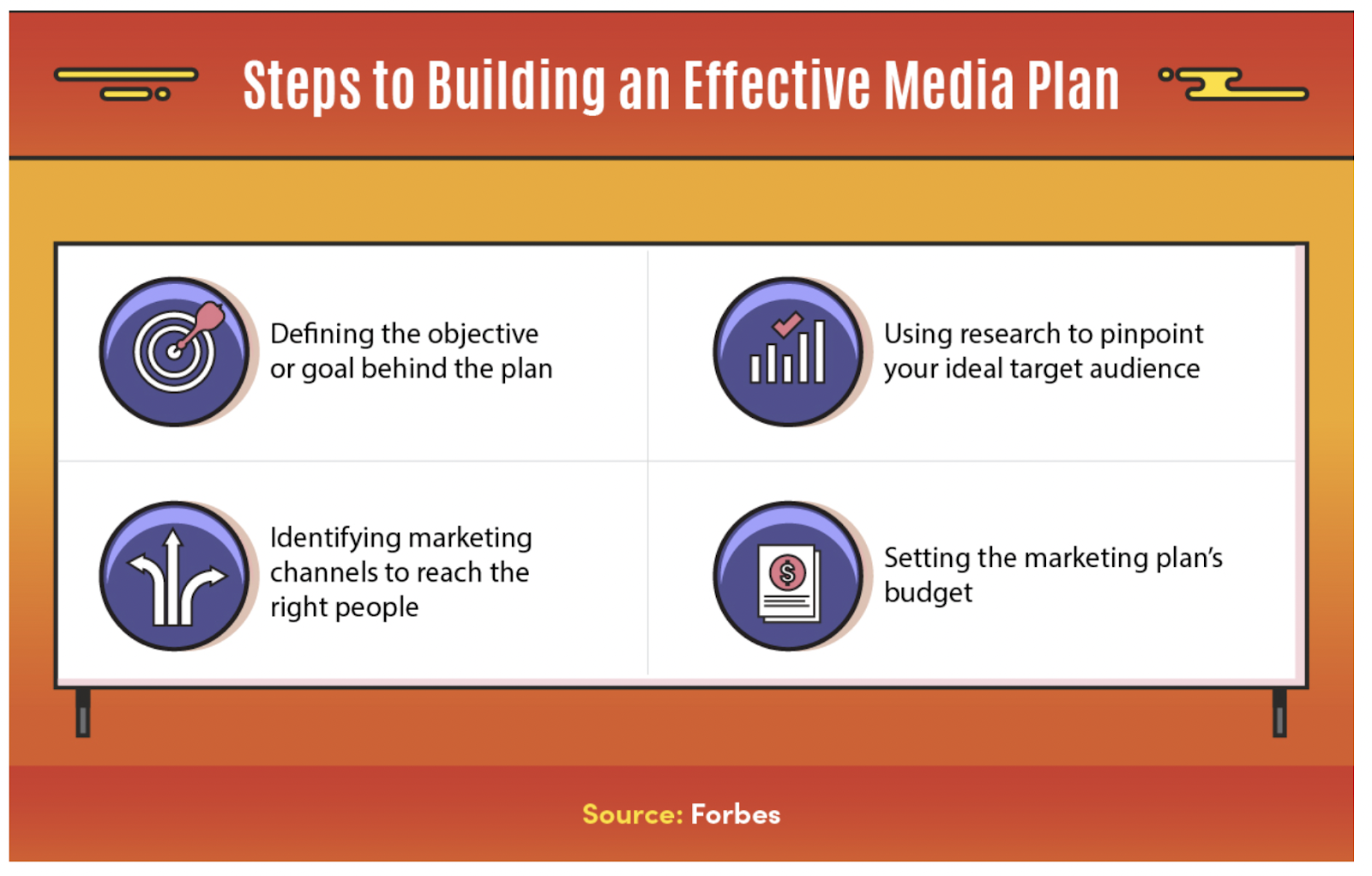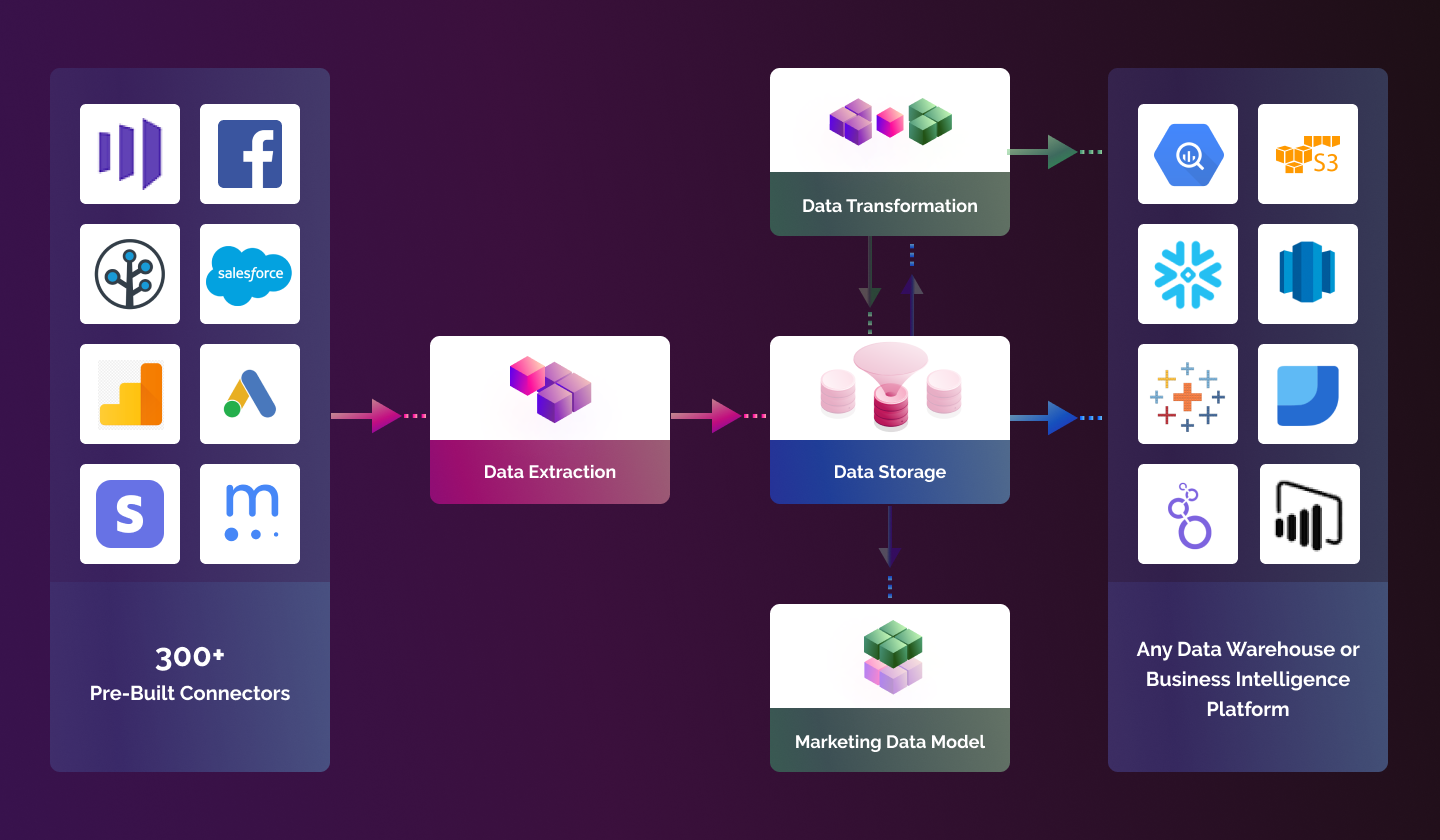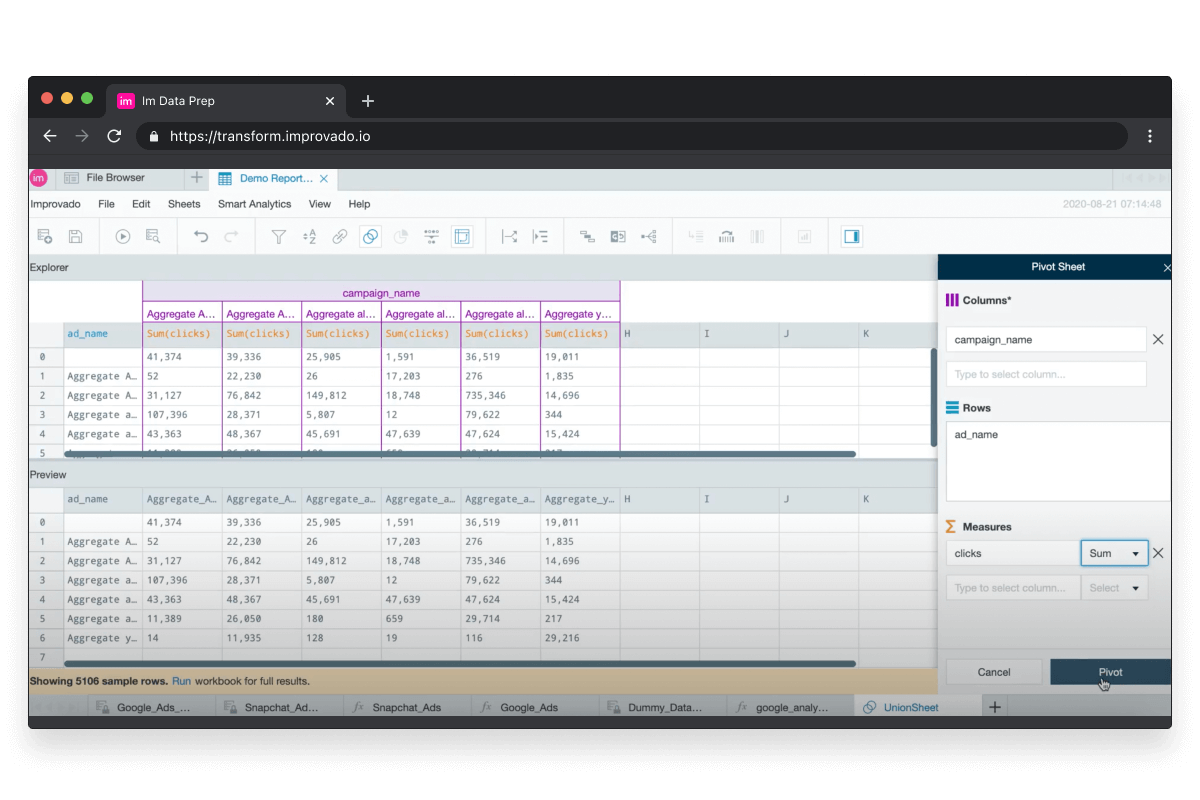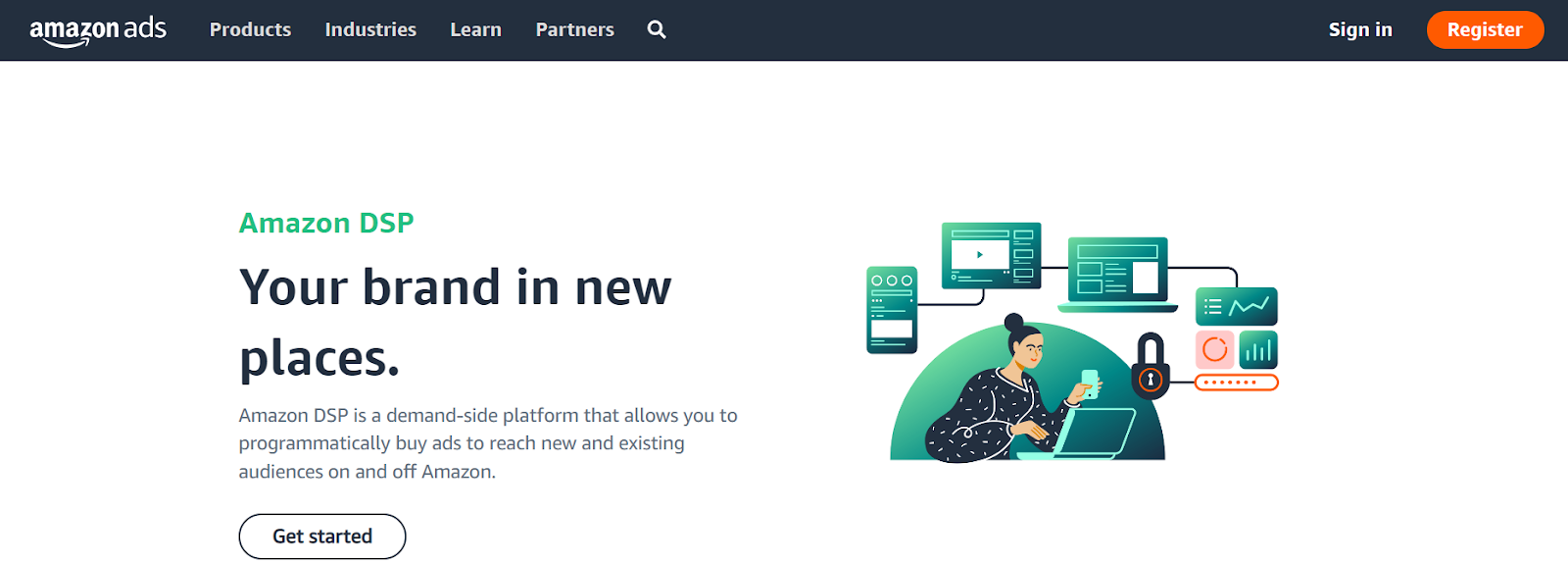In the past 20 years, media planning and buying have changed dramatically. In the same way that technology has changed how we shop, work, and connect with others, these two essential components of advertising and marketing strategy have also changed.
With the digital revolution, targeted media buying has allowed marketers to pinpoint and target precisely the audience they wish to attract. Whatever your experience with media buying and planning, there's much to learn.
With the advent of programmatic advertising, we can now purchase and sell inventory more efficiently. According to eMarketer, programmatic expenditures will exceed $140 billion by 2023.
This post will cover the similarities and differences between media planning and buying, what they can achieve for you, and what you need to know to get started.
Media Planning vs. Media Buying — Similarities and Differences
Media planning is the process of determining how, when and where advertisements are delivered to audiences. A media planner analyzes advertisements and devises a strategy for communicating them effectively to the target audience.
Media channels serve as a medium between brands and their target audiences. Using them properly enables you to communicate your advertising message to your audience through the most appropriate means.
Media vehicles can include television programs, digital media, newspapers, magazines, radio stations, outdoor advertising locations, etc., used to carry advertisements or commercials (or other marketing messages).
Media planners and buyers work together to make the most effective purchasing decisions. A media planner finds media to meet clients' marketing goals, whereas a media buyer negotiates rates and purchases said media.
Best practices for media planners
The following is a step-by-step guide to the best practices for developing a successful media plan. It is important to remember that there is no one-size-fits-all solution here, and your mileage may vary depending on the specific message you are trying to share and the particular audience you are targeting.
#1. Market Research
Conducting market research is the first step in developing a media plan. By researching your target audience and customers, you can create content and develop a media plan that fits their needs. The best way to do this is to develop a set of buyer personas.
This information will help you understand your target audience and how you should proceed, creating media that resonates with your prospects and hopefully turns them into long-term customers.
Moreover, you'll better understand what platforms and channels to use when publishing and sharing your content.
#2. Setting Goals
Planning a media campaign is easier if you have a clear goal. More importantly, goals help media planners decide which platforms and content forms to embrace and which ones to steer clear of.
Consider setting clearly defined and attainable goals for all the channels in which you plan to share content.
Streamlining the content creation process and scheduling posts ahead of time is a worthy goal. Using this approach, you will be able to ensure that your posts are relevant to the people viewing them, helping boost engagement and gaining a firm foothold in the minds of your audience.
#3. Creating and Implementing a Media Plan
A quick brainstorming session isn't going to cut it. Experienced media planners always make sure everyone is on the same page. This means you need to create an easy-to-understand media plan, ensuring that the entire team is aligned and, perhaps most importantly, accountable.
As discussed earlier, a media plan details the type of media you will create and how and where you will publish it. The plan may align with a more extensive company campaign, following pre-approved content and messaging, or it can be a standalone strategy describing how your organization plans to engage followers and potential customers through media.
It is essential to provide all parties with the necessary details of the plan so they can assist in executing it. If you're not coordinating the media planning process directly, make sure to delegate the responsibility to someone else and share their contact information with the team so that anyone with questions or comments can reach them.
For example, if your media plan includes a social media calendar (and it really should), the smart thing to do is plan out who will have access to it, both on the creative and the publication side.
#4. Evaluating the Results
It is crucial to measure your marketing plan's success, whether it involves a few posts on TikTok or a sprawling company-wide campaign across a multitude of channels.
Think about how your media plan helped you and your team achieve your specific goals. If there were any goals that you failed to reach, think about why.
You should evaluate your media plan based on your specific business goals, the people who create the media, and how you hope to benefit from it (boosting engagement, conversions, etc.).
Let's take a moment to review the social media calendar example above. Consider whether you have reached your target audience and achieved your objectives through your social media content plan.
Look at whether you've increased engagement on the social media platforms your plan focused on.
When evaluating the results of your campaigns, tracking metrics on a daily basis might take a significant amount of time. Checking each ad channel and comparing results to build a comprehensive picture of marketing performance takes tens of hours from marketing analysts weekly.
To make analytical processes more efficient, you might need a marketing data platform. It’ll help you extract data from all marketing channels automatically and load it into a unified dashboard.
For example, let’s take a look at Improvado. The platform integrates with 500+ marketing and sales data sources to centralize performance insights in easily-accessible storage. Then, marketers can streamline data to a dashboard in 15+ visualization tools to get a better picture of their campaign performance.
Moreover, Improvado also helps marketers bring metrics into a unified form, get rid of duplicate data entries, map data, and many more. The platform’s data preparation features are truly unmatchable and allow non-technical marketers to perform SQL-like transformations without a single line of code.
Evaluating results is crucial. That’s why you have to approach this process wisely and think of it during the media plan development phase.
Explaining the conсept of media buying
The primary purpose of media buying is to procure advertising space. Media buyers need to strategize and negotiate to maximize their ad campaign's ROI — this requires monitoring ad performance and adjusting the strategy as needed.
In the next section of the article, you will learn more about the different media buying types and best practices.
Media Buying Types
Now that we know what media buying is and how it differs from media planning, let's discuss the different media buying types. You can purchase media space through several channels, including the internet, TV, radio, etc.
If you want to reach the right audience, it is essential to know which channels are suitable for your brand and why.
Online Programmatic Media Buying
Programmatic buying relates mainly to online advertising, and it is particularly appealing to marketers because of its ability to target specific audiences. Programmatic advertising displays online ads based on shopping patterns, demographics, and other factors using machine learning algorithms and workflow automation.
A demand-side platform such as Amazon DSP enables advertisers to buy ads at a fixed price. In addition to facilitating the process of buying ad inventory, demand-side platforms (DSPs) also assist advertisers in discovering and reaching relevant audiences.
One way to programmatically purchase ads is through real-time bidding (RTB). It allows advertisers to participate in auctions as impressions become available. Their ad instantly appears on the publisher's site if their bid wins the auction. This way, advertisers can focus on the most relevant inventory, making this particular approach very effective.
Various Offline Channels
Digital media buying is the most common form of media buying at this point, but that doesn't mean the other channels should be neglected. There is still a lot of power in the synergy of various media channels, so it's good to be informed on how the "old-school" systems work.
TV
Your favorite television show or sporting event likely has lots of commercials throughout. These are the result of a media purchase.
Let's say you produced a film and are trying to promote it. Instead of playing the entire trailer in each commercial break, you might place short 10-second teasers across TV networks, prompting people to watch the full trailer online.
You would probably throw in a few key moments presenting the film's tone and release date.
Out-of-Home (Billboards)
You've also seen a few classic examples of out-of-home media buying when you drove past a billboard or bus with a giant movie poster on its side.
Sticking with the movie-promotion example, putting a massive billboard on Sunset Boulevard could be just the thing you need.
Even with online platforms, print advertisements like those in newspapers and magazines still bring in customers. Branding or promoting your creative project this way can be very effective. Print ads also provide excellent synergizing opportunities through QR codes. Scanning that QR code, allows the reader to seamlessly engage with your content.
Podcasts and Radio
Media buys such as radio and podcasts are highly effective. Small businesses can reach new and pre-existing customers through local stations and industry-specific podcasts.
Media Buying Best Practices
Now that you understand it in broad strokes, let's examine a few specifics of the media buying process. Following these five tips, you can create and negotiate the right media buys for your next advertising campaign.
1. Set Your Budget and Stick to It
Whether you've worked in a mom-and-pop grocery store or one of the world's top advertising agencies, you know how important it is to pay close attention to the budget.
Knowing your price point and starting your negotiations well below it is essential when making media purchases. Media buys that blow up the budget are even worse than ineffective ones.
2. Have a Goal in Mind
In order to choose the best media buys for your campaign, you must first determine what you want to achieve with each one.
Targeting the proper marketing channels and avoiding pitfalls will be easier if you have a clear goal in mind from the beginning. Your media buys will also be measured against this baseline to determine their effectiveness.
3. Be Mindful of Context
It's crucial to understand the context of your campaign as well as its contents. Your advertisements should be sensitive to what's happening in the current zeitgeist and the culture at large.
You will also gain a better perspective on your media mix, and your media buys will directly benefit from this. Optimizing your campaign and avoiding errors are two obvious advantages of this.
4. Use Various Channels
Limiting an ad campaign to one marketing channel is generally not a good idea. Rather than simply asking how digital media buying works or how TV media buying works, you should ask yourself how all channels can work together to create a high-quality campaign.
As a "team" working toward the same goals, your individual media buys will be better able to support each other. You will be better positioned for individual negotiations if you have a healthy mix of media buys.
5. Make Sure You're Getting What You Paid For
After making a media purchase, you must ensure that the marketing channel provides the agreed-upon services. Contracts play a vital role in this process, playing both the part of the sneaky villain and the unsung hero, depending on the situation.
If you sign a media buy contract, make sure it clearly outlines the conditions you have agreed to. By doing so early on, you will be protected before, during, and after the advertisement is published.
Conclusion
Things are constantly changing in the world of media planning and buying. Unique marketing channels have become increasingly popular, yet the practices' fundamental goals will never change.
With the right media plan and purchase, your brand is exposed to the right people in the right place, at the right time, and in the right way. These powerful marketing tools help establish meaningful connections between brands (or creative projects) and their prospective audiences.
500+ data sources under one roof to drive business growth. 👇
.png)
%20(1).png)
.png)

.png)
.png)









%20(1).png)

.png)





.png)


.png)
.png)
